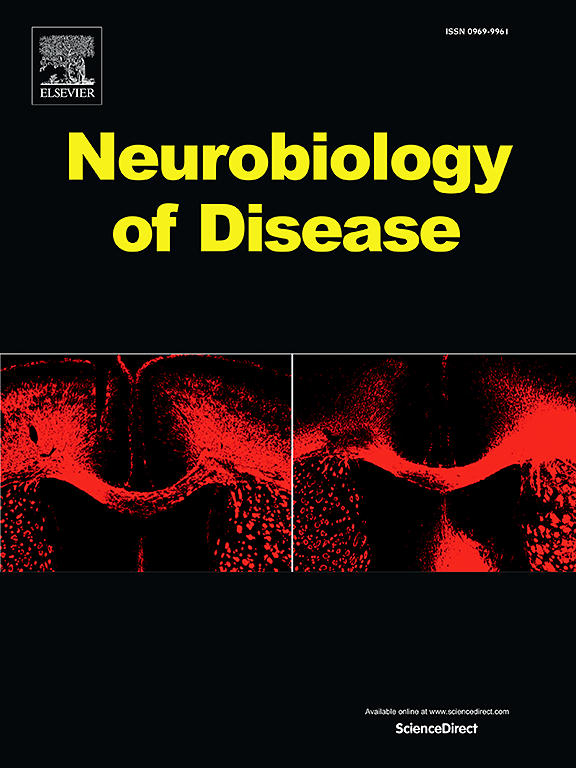在局灶性皮质发育不良小鼠模型中,在多个时间尺度上,间期活动波动跟随而不是先于癫痫发作。
IF 5.6
2区 医学
Q1 NEUROSCIENCES
引用次数: 0
摘要
癫痫发作的不可预测性是癫痫患者的主要衰弱因素。癫痫发作预报系统将大大提高他们的生活质量。成功的癫痫发作预测需要在多个时间尺度上对影响癫痫发作时间的因素有全面的了解。在这项研究中,我们在高度逼真的局灶性皮质发育不良相关癫痫小鼠模型中研究了间期癫痫样放电(IEDs)和癫痫参数的多尺度特性。我们在四个时间尺度上分析了这些特性的演变,从癫痫的进展和发作集群到昼夜节律和周期变化。我们发现fcd相关癫痫综合征在间歇活动率和发作特征方面是进行性的。60%的癫痫发作发生在群集中。在此期间,癫痫发作持续时间、癫痫发作威力和IED发生率均呈增加趋势。昼夜节律影响癫痫发作的发生,癫痫发作的峰值发生在下午4点 。在标准的12/12明暗循环下,早上6点 开灯。周周分析显示个体癫痫发作前的IED发生率无显著变化;然而,癫痫发作后观察到一致的IED升高双峰模式。具体来说,癫痫发作后5-10 min出现初始峰值,2小时内恢复到基线水平,4-12 h后出现二次峰值,24-48 h再次回落到基线水平。这种模式可以用三个指数的和来拟合。使用三指数模式,我们模拟了每只动物的IED率波动。经过平滑处理的模拟爆炸装置率与经过平滑处理的实际爆炸装置率显示出良好的一致性,这表明爆炸装置模式的累积效应可以解释爆炸装置率的长期波动。我们的研究结果表明,在我们的fcd相关癫痫模型中,一致的IED率波动是在个体癫痫发作之后而不是之前发生的。因此,IED率的波动可以看作是周期性癫痫发作的反映。这意味着,无论是IED率波动还是准确的癫痫发作记录,对癫痫发作风险的预测可能同样有价值。本文章由计算机程序翻译,如有差异,请以英文原文为准。
Interictal activity fluctuations follow rather than precede seizures on multiple time scales in a mouse model of focal cortical dysplasia
The unpredictability of seizure occurrence is a major debilitating factor for people with epilepsy. A seizure forecasting system would greatly improve their quality of life. Successful seizure forecasting necessitates a comprehensive understanding of the factors influencing seizure timing at multiple temporal scales. In this study, we investigated multiscale properties of interictal epileptiform discharges (IEDs) and seizure parameters in a highly realistic mouse model of focal cortical dysplasia-related epilepsy. We analyzed the properties' evolution at four timescales, ranging from epilepsy progression and seizure clusters to circadian and peri-ictal changes. We discovered that the FCD-related epilepsy syndrome was progressive in terms of interictal activity rate and seizure characteristics. Sixty percent of seizures occurred in clusters. During the clusters, the seizure duration, seizure power, and IED rate were increasing. Circadian rhythm influenced seizure occurrence with the peak seizure probability at 4 p.m. under a standard 12/12 light dark cycle with lights-on at 6 a.m. Peri-ictal analysis revealed no significant change in IED rate preceding individual seizures; however, a consistent two-peak pattern of IED elevation was observed following seizures. Specifically, an initial peak in IED rate emerged 5–10 minutes post-seizure, returning to baseline within two hours, followed by a secondary peak 4–12 hours later, which again subsided to baseline levels in 24–48 hours. This pattern could be fitted with a sum of three exponentials. Using the three-exponential pattern, we simulated IED rate fluctuations in each animal. The smoothed simulated IED rates showed good agreement with the smoothed real recorded IED rates, suggesting that the cumulative effect of post-ictal IED patterns can account for long-term fluctuations in IED rate. Our results indicate that, in our model of FCD-related epilepsy, consistent IED rate fluctuations follow rather than precede individual seizures. Therefore, fluctuations in IED rate can be viewed as a reflection of cyclic seizure occurrence. This implies that either IED rate fluctuations or accurate seizure records may be equally valuable for seizure risk forecasting.
求助全文
通过发布文献求助,成功后即可免费获取论文全文。
去求助
来源期刊

Neurobiology of Disease
医学-神经科学
CiteScore
11.20
自引率
3.30%
发文量
270
审稿时长
76 days
期刊介绍:
Neurobiology of Disease is a major international journal at the interface between basic and clinical neuroscience. The journal provides a forum for the publication of top quality research papers on: molecular and cellular definitions of disease mechanisms, the neural systems and underpinning behavioral disorders, the genetics of inherited neurological and psychiatric diseases, nervous system aging, and findings relevant to the development of new therapies.
 求助内容:
求助内容: 应助结果提醒方式:
应助结果提醒方式:


